Ariane 5 ECA missions
Ariane 5 ECA is designed to deliver payloads, mainly communications satellites, weighing up to 10 t into GTO, including the supporting structure and adaptors. With its increased capacity, Ariane 5 ECA can handle dual launches of very large satellites.
This version of the launcher maintains Europe’s competitiveness in the commercial space transport sector by offering customers the opportunity to launch a wider range of heavier satellites.
Owing to its performance and flexibility to adapt to different missions requirements, Ariane 5 ECA is also used by institutional customers for non-GTO missions (for example, launching ESA’s Herschel and Plank scientific missions in 2009).
Ariane 5 ECA elements
Ariane 5 ECA is an improved version of the Ariane 5 generic launcher. Although it has the same general architecture, a number of major changes were made to the basic structure of the generic version to increase thrust and enable it to carry heavier payloads. This launcher configuration consists of three parts.
1. Lower composite (EAP and EPC)
The lower composite comprises:
**Two boosters (EAP: Etage d’Accélération à Poudre): 3 m diameter, 31 m high, each with 240 t of solid propellant, together providing 1200 t of thrust at liftoff. The maximum thrust during flight can reach 1300 t. EAP burns for about 135 s. After separating from the main stage they reenter the atmosphere above the Atlantic Ocean.
The cryogenic main core stage (EPC: Etage Principal Cryotechnique): 5.4 m diameter, 30 m high, containing 175 t of propellants (25 t of liquid hydrogen and 150 t of liquid oxygen), with the Vulcain 2 engine providing 136 t of thrust. EPC operates for about 540 s. It also provides roll control during the main propulsion phase. At shut down, EPC separates from the upper composite at an altitude between 160 km and 210 km, depending on the mission’s trajectory, and performs a destructive reentry in the atmosphere over the Atlantic Ocean.
Total liftoff thrust is about 1340 t.
######The Vulcain 2 engine is ignited first. A few seconds later, when it reaches its nominal operating level, the two solid-propellant boosters are fired.
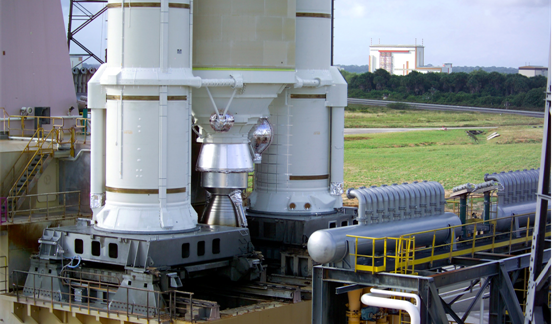
2. Upper composite (ESC-A, VEB and supporting structure)
The upper composite comprises:
The cryogenic upper stage (ESC-A: Etage Supérieur Cryotechnique de type A) with 14.7 t of propellant (liquid hydrogen and oxygen). The reliable HM7B engine providing 6.5 t of thrust is reused from Ariane 4’s third stage. It operates for about 945 s and also provides attitude control during the propulsion phase and the separation sequences of the payloads.
The Vehicle Equipment Bay (VEB-C), ‘the brain’, autonomously controls the whole vehicle. Its structure is made of composite material. The VEB transmits all key flight parameters to the ground station network.
The supporting structure interfacing with the payload. This conical adaptor is mounted on top of the VEB and provides the standard 2624 mm diameter interface with the payload adaptor.

3. Launcher upper part (fairing and Sylda 5)
The launcher upper part comprises:
The fairing protecting the payload at liftoff and during atmospheric flight (5.4 m diameter, 20 m high). The fairing is split into two pyrotechnically and jettisoned more than 3 minutes after liftoff, at an altitude above 100 km.
The structure accommodating the lower and upper satellites, Sylda 5 (Système de Lancement Double Ariane 5): 4.6 m diameter and height varies from 4.9–6.4 m in increments of 0.3 m. Six versions accommodate the various sizes of satellites.
Ariane 5 ECA launch sequence
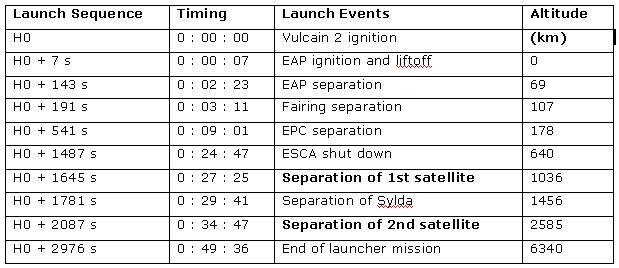

GENERAL INFO
- Created On: Android
- Game Version: 0.9.307.0
- Price: $15,557k
- Number of Parts: 74
- Dimensions: 50 m x 12 m x 6 m
PERFORMANCE
- Total Delta V: 6.1km/s
- Total Thrust: 10.5MN
- Engines: 4
- Wet Mass: 5.54E+5kg
- Dry Mass: 46,038kg
STAGES
| Stage | Engines | Delta V | Thrust | Burn | Mass |
|---|---|---|---|---|---|
| 1 | 3 | 4.2km/s | 10.1MN | 5.6m | 5.54E+5kg |
| 3 | 1 | 2.0km/s | 406kN | 1.6m | 29,881kg |
1 Comment
1 Upvote
Log in in to upvote this post.



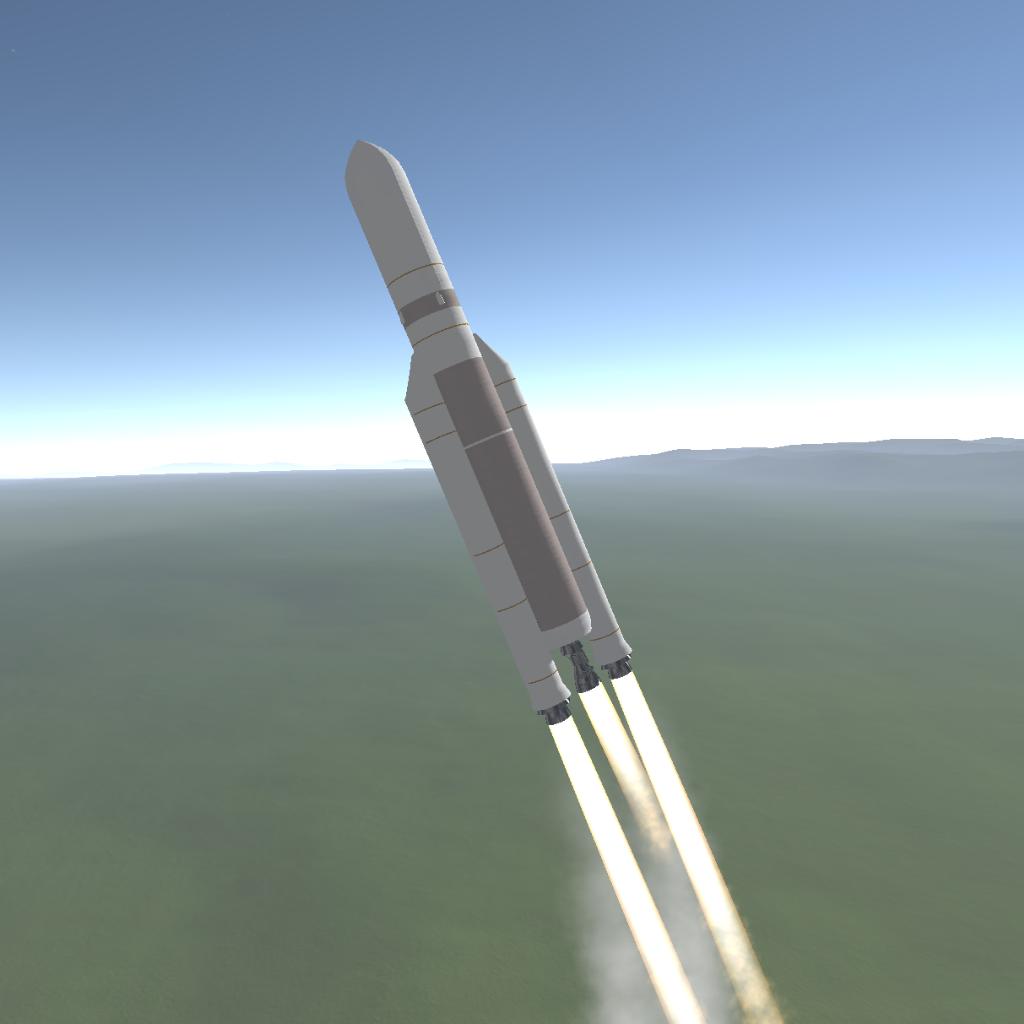
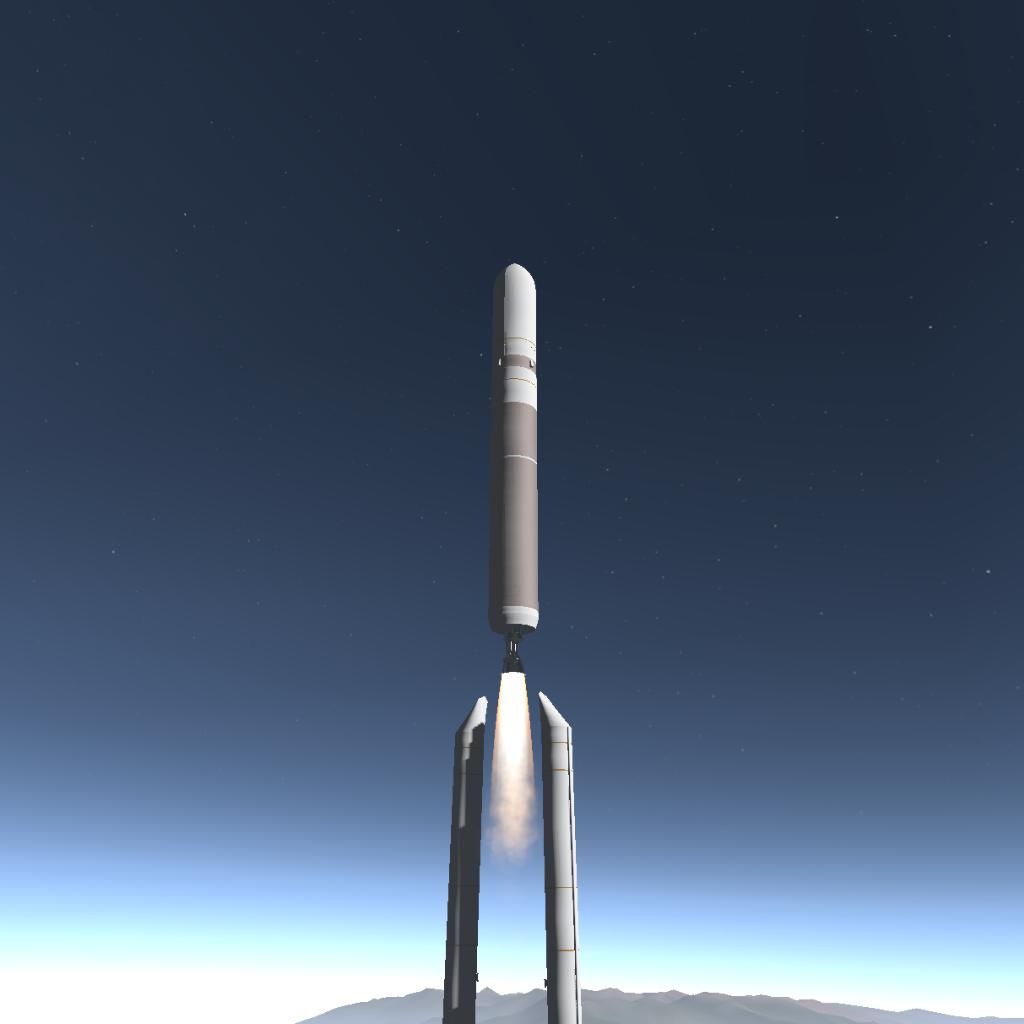
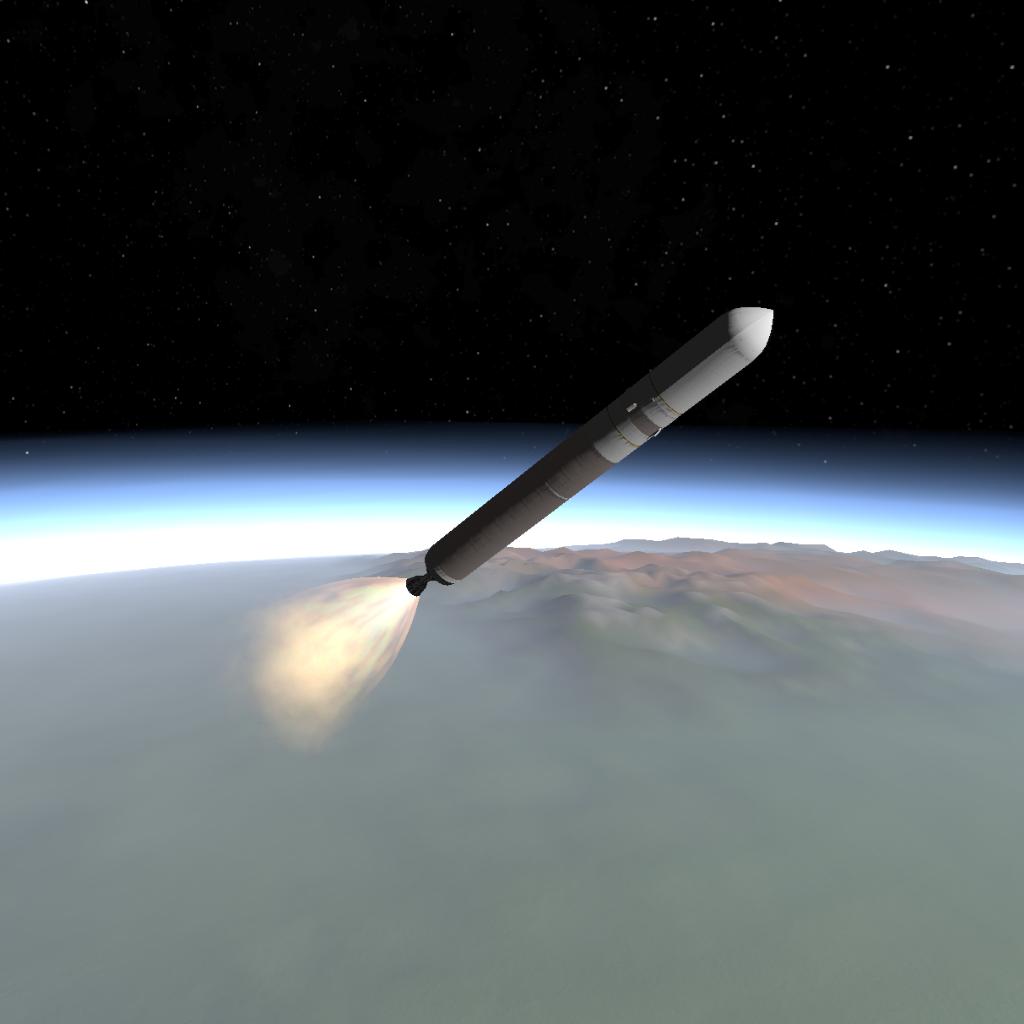
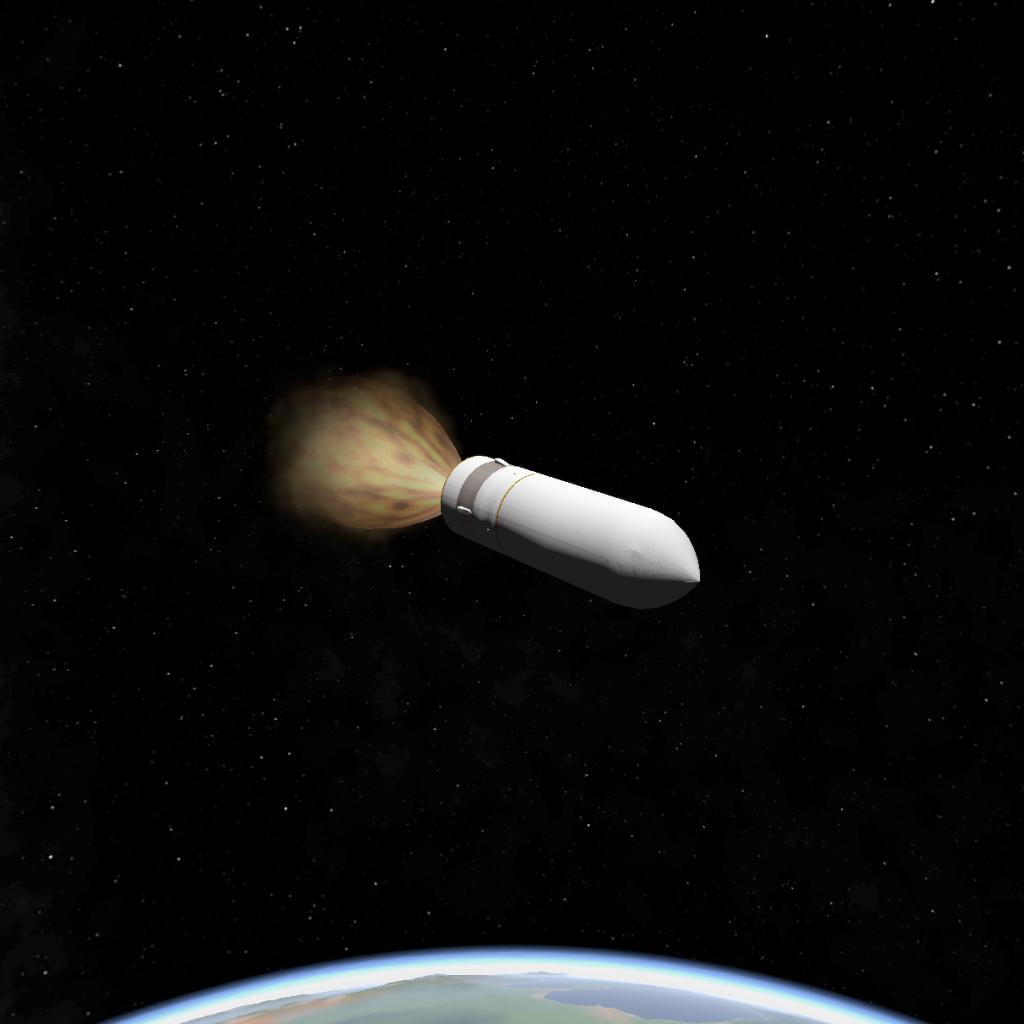



Im going to test this rocket to its limits